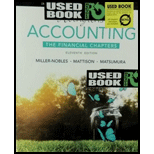
1)
Introduction:
Marginal Costing and Contribution Margin:
- Contribution Margin refers to the excess of Sales revenues over variable and fixed costs. Since it contributes to the overall profitability of the business it is referred to as contribution margin.
- Variable costs refer to the costs of manufacture that have a direct co-relation with the volume of the goods manufactured, i.e. the costs increase with an increase in the goods produced. Examples are costs of direct material and direct labor.
- Fixed costs refer to the costs of manufacture that have an inverse co-relation with the volume of the goods manufactured, i.e. the costs decrease with an increase in the goods produced. Examples are costs of factory rent,
depreciation on plant and equipment
Absorption Costing
• A method of allocating costs at full value, the absorption costing method, focuses on allocation of all costs of production to the goods produced and unlike marginal costing, in which costs are allocated to the goods sold.
• Absorption costing often leads to over / under absorption of
Costing method which produces the highest operating income.
2)
Introduction:
Marginal Costing and Contribution Margin:
- Contribution Margin refers to the excess of Sales revenues over variable and fixed costs. Since it contributes to the overall profitability of the business it is referred to as contribution margin.
- Variable costs refer to the costs of manufacture that have a direct co-relation with the volume of the goods manufactured, i.e. the costs increase with an increase in the goods produced. Examples are costs of direct material and direct labor.
- Fixed costs refer to the costs of manufacture that have an inverse co-relation with the volume of the goods manufactured, i.e. the costs decrease with an increase in the goods produced. Examples are costs of factory rent, depreciation on plant and equipment
Absorption Costing
• A method of allocating costs at full value, the absorption costing method, focuses on allocation of all costs of production to the goods produced and unlike marginal costing, in which costs are allocated to the goods sold.
• Absorption costing often leads to over / under absorption of Overheads, as it is a method of allocation of costs to goods manufactured, as opposed to allocation of goods sold.
Costing method which produces the highest value of closing stock
Want to see the full answer?
Check out a sample textbook solution
Chapter 21 Solutions
Horngren's Accounting, The Financial Chapters (11th Edition) - Standalone Book
- I need help with this general accounting question using standard accounting techniques.arrow_forwardNonearrow_forwardAt the high level of activity in July, 9,500 machine hours were run, and energy costs amounted to $28,500. In January, a month of low activity, 4,200 machine hours were run, and energy costs totaled $16,800. Using the high-low method, what is the estimated fixed cost element of energy costs?arrow_forward

 AccountingAccountingISBN:9781337272094Author:WARREN, Carl S., Reeve, James M., Duchac, Jonathan E.Publisher:Cengage Learning,
AccountingAccountingISBN:9781337272094Author:WARREN, Carl S., Reeve, James M., Duchac, Jonathan E.Publisher:Cengage Learning, Accounting Information SystemsAccountingISBN:9781337619202Author:Hall, James A.Publisher:Cengage Learning,
Accounting Information SystemsAccountingISBN:9781337619202Author:Hall, James A.Publisher:Cengage Learning, Horngren's Cost Accounting: A Managerial Emphasis...AccountingISBN:9780134475585Author:Srikant M. Datar, Madhav V. RajanPublisher:PEARSON
Horngren's Cost Accounting: A Managerial Emphasis...AccountingISBN:9780134475585Author:Srikant M. Datar, Madhav V. RajanPublisher:PEARSON Intermediate AccountingAccountingISBN:9781259722660Author:J. David Spiceland, Mark W. Nelson, Wayne M ThomasPublisher:McGraw-Hill Education
Intermediate AccountingAccountingISBN:9781259722660Author:J. David Spiceland, Mark W. Nelson, Wayne M ThomasPublisher:McGraw-Hill Education Financial and Managerial AccountingAccountingISBN:9781259726705Author:John J Wild, Ken W. Shaw, Barbara Chiappetta Fundamental Accounting PrinciplesPublisher:McGraw-Hill Education
Financial and Managerial AccountingAccountingISBN:9781259726705Author:John J Wild, Ken W. Shaw, Barbara Chiappetta Fundamental Accounting PrinciplesPublisher:McGraw-Hill Education





